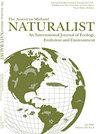Reproductive Status of Several Members of the Simulium arcticum Complex (Diptera: Simuliidae) in Three Populations in Central Washington State
IF 0.6
4区 环境科学与生态学
Q4 Agricultural and Biological Sciences
引用次数: 0
Abstract
Abstract. Black fly larval collection sites at three rivers in central Washington state all possess taxa of the Simulium arcticum Malloch complex with the autosomal inversion, IS-1, in high enough frequency to test for Hardy-Weinberg equilibrium independently at each site. Such tests determine reproductive status of the taxa present. These situations in which the IS-1 autosomal inversion is in relative high frequency are rare. Moreover, earlier molecular comparisons suggest a single taxon for the S. arcticum complex and cytogenetic studies at the local level may or may not support earlier molecular work. Such knowledge could further our understanding of the proper taxonomy of these taxa, that is, whether they are good biological species or not. I scored the three genotypes of the IS-1 inversion in 247 larvae to test the reproductive status of populations of three members of the Simulium arcticum complex (Simulium brevicercum, S. saxosum, and the newly discovered cytotype (S. arcticum IIL- 81) at the Methow, Entiat and Wenatchee rivers of Washington state. In all three cases, larvae conformed to Hardy-Weinberg equilibrium, suggesting these populations were panmictic when the collections were made. Thus, these results support earlier molecular work and indicate that the three taxa at these sites can freely interbreed.华盛顿州中部三个种群中弓形Simulium复合体几个成员的繁殖状况(直翅目:Simuliidae)
摘要华盛顿州中部三条河流上的黑蝇幼虫采集点都拥有具有常染色体反转型IS-1的Simulium arcticum Malloch复合体的分类群,其频率足够高,可以在每个地点独立测试Hardy-Weinberg平衡。这些测试确定了现有分类群的繁殖状态。这种IS-1常染色体倒置的频率相对较高的情况是罕见的。此外,早期的分子比较表明,弓形虫复合体只有一个分类单元,地方层面的细胞遗传学研究可能支持也可能不支持早期的分子工作。这些知识可以进一步加深我们对这些分类群的正确分类的理解,即它们是否是好的生物物种。我在247只幼虫中对IS-1反转的三种基因型进行了评分,以测试华盛顿州Methow河、Entiat河和Wenatchee河弓形虫复合体三个成员(短尾Simulium、S.saxosum和新发现的细胞型(S.arcticum IIL-81)的种群的繁殖状况。在所有三种情况下,幼虫都符合Hardy-Weinberg平衡,这表明这些种群在采集时是泛米种群。因此,这些结果支持了早期的分子工作,并表明这些位点的三个分类群可以自由杂交。
本文章由计算机程序翻译,如有差异,请以英文原文为准。
求助全文
约1分钟内获得全文
求助全文
来源期刊

American Midland Naturalist
环境科学-生态学
CiteScore
1.20
自引率
0.00%
发文量
38
审稿时长
18-36 weeks
期刊介绍:
The American Midland Naturalist has been published for 90 years by the University of Notre Dame. The connotations of Midland and Naturalist have broadened and its geographic coverage now includes North America with occasional articles from other continents. The old image of naturalist has changed and the journal publishes what Charles Elton aptly termed "scientific natural history" including field and experimental biology. Its significance and breadth of coverage are evident in that the American Midland Naturalist is among the most frequently cited journals in publications on ecology, mammalogy, herpetology, ornithology, ichthyology, parasitology, aquatic and invertebrate biology and other biological disciplines.
 求助内容:
求助内容: 应助结果提醒方式:
应助结果提醒方式:


